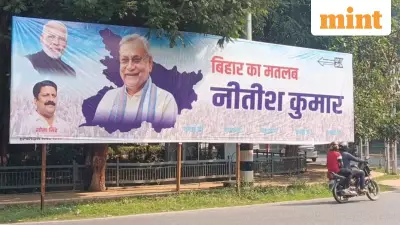
The Bharatiya Janata Party and its allies have achieved a near-sweep in the Bihar Assembly elections, establishing the saffron party's invincibility in the Hindi heartland once again. The results announced on November 15, 2025, demonstrate a significant shift in voter priorities from traditional caste politics to development-oriented governance.
The Modi Factor and Strategic Campaigning
Prime Minister Narendra Modi's popularity and strategic campaigning played a crucial role in the NDA's victory. Modi addressed 14 massive rallies across key districts, beginning his campaign on October 24 from the ancestral village of Jan Nayak Karpoori Thakur in Samastipur district. This symbolic gesture honored the respected former Chief Minister, whom the Modi government had honored with the Bharat Ratna, sending a strong message about the NDA's commitment to clean, honest governance.
The data reveals that constituencies where the Prime Minister campaigned extensively witnessed significantly higher voter turnout. Samastipur recorded 71.74% turnout, while Begusarai and Muzaffarpur saw 69.87% and 71.81% participation respectively, indicating the effectiveness of Modi's grassroots engagement.
Organizational Strength and Messaging
The BJP's organizational machinery proved unmatched in this election. Home Minister Amit Shah, known for his electoral management expertise, camped in Bihar for several weeks, orchestrating an intense and organized campaign across all 243 assembly segments. More than 900 senior leaders from across the country were deployed to Bihar for two months to manage the campaign at the grassroots level.
The party successfully identified the right mix of electoral issues and created a powerful messaging mechanism. The Union government's welfare programs, which benefited women, the elderly, and underprivileged sections over the past decade, helped build trust in Modi's governance. The campaign effectively framed the electoral battle as a choice between good governance and the return of "jungle raj" associated with Lalu Prasad Yadav's era.
Opposition Failures and Alliance Dynamics
The opposition alliance, particularly the RJD-Congress combination, failed to counter the BJP's strategic offensive. Congress proved to be an albatross around the RJD's neck, demanding and receiving more than 60 seats to contest but ending up largely decimated. Tejashwi Yadav, despite his efforts to create a different image over five years, couldn't escape his father's political shadow.
While the BJP presented its good governance agenda through extensive campaigning by several chief ministers and central ministers, Yadav was left to campaign alone. The opposition appeared helpless against the BJP's sharp attack focused on preventing the return of lawlessness, a theme that resonated even among younger voters who remembered the dreadful Lalu years.
Historic Mandate and Future Implications
This victory establishes Narendra Modi's credentials as an able alliance manager and marks a significant turning point in Bihar's political landscape. Nitish Kumar's JD(U) played a major role in securing this historic mandate, with Kumar creating history by serving as Chief Minister for nearly 20 years.
The most important message from this election result is the apparent end of caste politics in Bihar. The RJD's reliance on the traditional Muslim-Yadav formula failed spectacularly, with Tejashwi Yadav himself trailing for several rounds in his family stronghold of Raghopur. Voters clearly opted for good governance over caste loyalty, signaling a transformation that could change Bihar's destiny in the coming years.
The BJP's 24/7 political engagement contrasted sharply with Rahul Gandhi's sporadic participation, whose absence from the political scene and controversial foreign trips during crucial campaign periods highlighted the opposition's organizational weaknesses.





